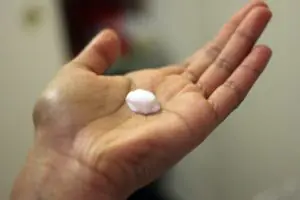
A burn is a painful and extremely dangerous injury to the skin. It is not difficult to prevent unpleasant consequences if you correctly provide first aid to the victim and subsequently organize adequate treatment.
This article explains which ointment after burns is best to use in each specific case.
First aid
The choice of a suitable product depends primarily on:
- severity of the burn;
- depth of tissue damage;
- area of affected skin.
It is important to understand that ointment after burns (even sunburn) should not be used immediately under any circumstances. First of all, it is necessary to ensure free access of air to the affected area.
The first and most effective way to help is to cool the skin. This could be a cold shower or an ice pack. The latter is applied for half an hour, after which a ten-minute break is taken and applied again.
When blisters form, the skin is treated with any antiseptic that does not contain alcohol. This will work here:
Then cover the sore spot with clean gauze and call a doctor.
Mild burns
A good and effective ointment for minor burns (1st degree) is Panthenol. This drug relieves very quickly 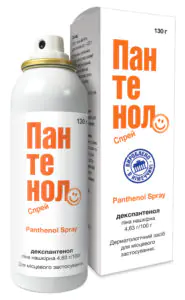
inflammation. Its undoubted advantage is its very affordable price. The main active ingredient in it is dexpanthenol. Once on the surface of the skin, it is transformed into pantothenic acid, which, in turn, perfectly stimulates regenerative processes.
The drug is available in the following forms:
Any type of Panthenol is equally effective against all types of burns (chemical, solar, thermal). It should be used no more than 4 times a day. The composition is applied to the damaged area in a thin layer and gently rubbed until completely absorbed.
This ointment after burns is suitable for:
- children at any age;
- pregnant women;
- mothers breastfeeding their babies.
Help in the first days
In the next few days of the post-burn period, you can also use the following remedies:
During the first 24 hours, it is advisable to use special creams to speed up wound healing.
In particular, Levomekol contains an antibiotic, therefore it effectively protects against infection and suppuration. Indicated for burns up to 2nd degree.
Mephenate is an ointment after burns, which has a pronounced anti-inflammatory and anesthetic effect. Pregnant women should avoid using it. May also cause allergies.
Actovegin cream contains an extract made from the blood of calves. Helps effectively at any stage of treatment. The only thing you should know is that during the first day it is more correct to use it in the form of a gel. The product is applied 2 to 4 times a day.
In general, it should be noted that such drugs should not be used for third-degree burns, since such serious lesions are usually accompanied by:
This requires a completely different approach to treatment and hospitalization.
Ointments during the recovery period
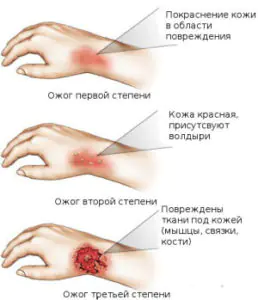
A few days after the burn, the healing or granulation stage begins. During this phase, the skin actively regenerates. The speed of recovery directly depends on the correct selection of cream.
It is worth understanding that here, too, you cannot use drugs based on fatty substances. Medicines containing silver will help much more effectively. It is only important to remember that they should not be applied for longer than 14 days, as they provoke the development of superinfections.
To protect the affected skin from drying out and causing scars, as well as to destroy microbes, you should choose Argosulfan. This drug is based on silver sulfathiazole.
The ointment is applied 2-3 times, every day for a week. It should not be used to treat children under 2 months of age. It is also contraindicated for people with functional liver disorders and pregnant women.
Dermazin is a very effective remedy, produced in different forms. They treat the burn twice a day. Before each application, wash the sore area with cool water. Can be used to help children if they are more than one month old. The ointment has side effects:
- irritation;
- severe itching;
- the appearance of brown spots.
Ebermin - many people who have tried it on themselves call this remedy the best available on the market. This ointment also contains silver sulfadiazine, and besides it, also collagen, thanks to which skin restoration occurs much faster.
This medication is contraindicated only for pregnant women and infants under one year of age. Before applying Ebermin, the burn is treated with an antiseptic solution.
Prevention of suppuration
The formation of a blister on a wound is quite common. Many people try to open it, but this should not be done, since the risk of suppuration increases. If the blister is very large, you can carefully pierce it with a sterile needle from a disposable syringe without tearing off the peeled skin.
In this situation, it is necessary to use ointments containing antibiotics. These include:
Healing drugs
When the wound is closed with new cells, ointments containing zinc and natural ingredients should be used.
If the burn site heals too slowly, you need to use Baneocin. The medicine contains two antibiotics at once. In addition, it promotes:
- protection against cracking;
- hydration.
The ointment can be used to help children and adults. In both cases, no complications were noted. The duration of therapy is a week.
All iLive content is reviewed by medical experts to ensure it is as accurate and factual as possible.
We have strict sourcing guidelines and only link to reputable sites, academic research institutions and, where possible, proven medical research. Please note that the numbers in parentheses ([1], [2], etc.) are clickable links to such studies.
If you believe that any of our content is inaccurate, out of date, or otherwise questionable, please select it and press Ctrl + Enter.
The intensity with which recovery after burns occurs and its results are determined by many factors, primarily the degree of skin damage, especially with deep burn injuries, when the layer of germ cells of the epidermis is affected.
In order for skin restoration after a burn to proceed normally during the convalescent period, certain medications, physiotherapeutic procedures and surgical methods are used.
Recovery after a 1st degree burn
As a rule, recovery after a 1st degree burn - with skin erythema not extending beyond the stratum corneum - occurs within three to four days due to the constant physiological renewal of the cells of this layer.
However, with a large burned surface, the person’s general condition worsens significantly due to disturbances in thermoregulation and dehydration, which requires emergency treatment and longer recovery. It is recommended to take vitamins A, C, B1, B6, B9, B12, P.
Recovery from sunburn, which in most cases is limited to 1st degree, can be facilitated with the help of external products containing provitamin B5 - dexpanthenol (Panthenol, D-panthenol); aloe liniment and gels with its extract; Kalanchoe juice; ointments with comfrey, allantoin and vitamin E. Read also - Creams for burns. Sea buckthorn oil and rosehip oil, propolis and mumiyo (in the form of aqueous solutions) help, which should be used when the stage of desquamation (peeling) of the epithelium begins.
But the ease of sunburn is deceptive. You can quickly restore the normal condition of the skin, but its damage does not go away without a trace: excessive ultraviolet irradiation causes damage to the DNA of dermal cells, accelerates atrophic processes in the skin and increases the risk of malignant degeneration of its cells. Experts at the US Skin Cancer Foundation warn that more than five sunburns in youth increases the likelihood of developing melanoma by 80%.
Recovery after a 2nd degree burn
The recovery of the skin after a 2nd degree burn takes much longer, when, in addition to hyperemia and swelling of the skin, its top layer peels off with the formation of vesicles (bubbles) filled with serous exudate.
With vesicles that remain unopened, the repair of skin cells takes three to four weeks, and with a burst vesicle and infection, it takes twice as long. The restoration of the skin after a burn with boiling water, which most often happens to be 2nd degree, can take the same amount of time. It may be necessary to restore facial skin after a burn received, for example, from exposure to steam, as a result of chemical peeling or laser resurfacing, which often causes the formation of blisters and peeling of the epidermis.
To activate the process of cell regeneration and improve the trophism of damaged tissues, ointments and creams are used to restore skin after burns:
- 10% Methyluracil (Metacyl) ointment;
- Reparef ointment (with antimicrobial quinoxaline and a complex of essential fatty acids);
- 5% Actovegin ointment;
- Solcoseryl ointment and gel;
- Wundehil ointment (with propolis and medicinal plant extracts);
- Thymogen cream (with glutamine and tryptophan).
- multicomponent homeopathic ointment Traumeel S.
To stimulate regenerative processes in the dermis, a solution of sodium deoxyribonucleate (Derinat) is used externally. For oral administration, a drug from the group of regenerants Xymedon (tablets of 0.25 g) can be prescribed - three times a day, two tablets. And the drug Prodigiosan (synthesized from the pigment of the cell walls of Chromobacterium prodigiosus), which is in the form of a solution and is intended for intramuscular injection.
More useful information in the article – Treatment of burns
Recovery after a 3rd degree burn
The most difficult recovery is after a 3rd degree burn, since damage to skin tissue leads to necrosis (due to protein coagulation), and first the dead tissue is rejected. As a result, the process of granulation and epithelization of a burn wound can begin a month after receiving a burn and continue for three or more months.
Restoration of the skin after a 3rd degree burn is carried out using the same external means as listed above. They also stimulate recovery after severe burns by applying wipes with the drug Honsurid (chondroitin + hyaluronate) to the burn surface - once for two to three days.
However, in many cases, the large size of burn wounds leads to the need to replenish the missing skin tissue using surgery - various methods of skin grafting: a flap of the patient’s own skin (autograft), allo or xenografts, transplantation of keratinocytes or fibroblasts (cultured on a collagen basis) onto the burn surface.
In addition, it is necessary to fight scars - dense formations of fibrous fibrous tissue replacing epidermal cells. For this purpose, external agents such as ointments with corticosteroids (Hydrocortisone, etc.), Heparin ointment, Contractubex and Zeraderm ultra gels are used. All details of their use are in the material – Ointments for scar resorption.
In addition to ointments, Lidaza (in the form of a lyophilisate), which softens fibrous scar tissue, is used - by introducing 1 ml of the prepared solution into the scar tissue area (every day or every two days).
Burn scars, especially wide ones, will be much flatter when using special compression stockings or elastic bandages. This method is called compression therapy, and its principle of action is based on a more orderly deposition of collagen by applying pressure perpendicular to its growing fibers.
A significant reparative effect for skin restoration after 2nd and 3rd degree burns is observed when performing physiotherapeutic procedures:
- electrophoresis with corticosteroids (Hydrocortisone), aloe extract, Actovegin;
- ultraphonophoresis with proteolytic enzymes (Chymotrypsin, Lidase, Collagenase, Terrylitin);
- medicinal infrared photophoresis;
- UHF and EHF therapy.
With burns to the extremities, joints often suffer due to scars that reduce their functional mobility. Not only therapeutic massage sessions and physical therapy, but also some pharmacological drugs help to cope with contracture. Among them, experts call Chondroitin sulfate (Structum), which is produced in the form of capsules and taken orally - one capsule (0.25 g) per day. And also the drug Longidase, which is a hyaluronidase conjugate, in the form of a powder for the preparation of an injection solution (an intramuscular injection is given once every three to five days).
Restoring tongue sensitivity after a burn
Tongue burns, especially thermal and chemical burns, occur quite often in everyday life. If the tongue is red and swollen, then this is a 1st degree burn, which damages the mucous membrane - the upper layers of its multilayered squamous epithelium. When the pain is very severe and a bubble forms on the red and swollen surface of the tongue, this is a 2nd degree burn with damage to the deeper layers of the mucosa. A 3rd degree burn affects not only the mucosal plate, but can also reach the lingual fascia.
Restoring the sensitivity of the tongue after a 1-2 degree burn (regeneration of filiform and conical papillae) occurs by itself. In the same way, taste is restored after a tongue burn: damaged taste buds (receptors) of the fungiform, grooved and foliate papillae, which provide the sense of taste and are constantly renewed.
Rinsing your mouth with a decoction of calendula flowers, plantain leaves or knotweed, as well as aloe and golden mustache juice can help restore them and heal the burn. And doctors advise using Promizol spray with propolis and oils - eucalyptus and clove.
Burns are injuries caused by exposure to heat, chemicals, electrical energy, or radiation. Treatment regimen such injury selected depending on the area and depth of damage received.
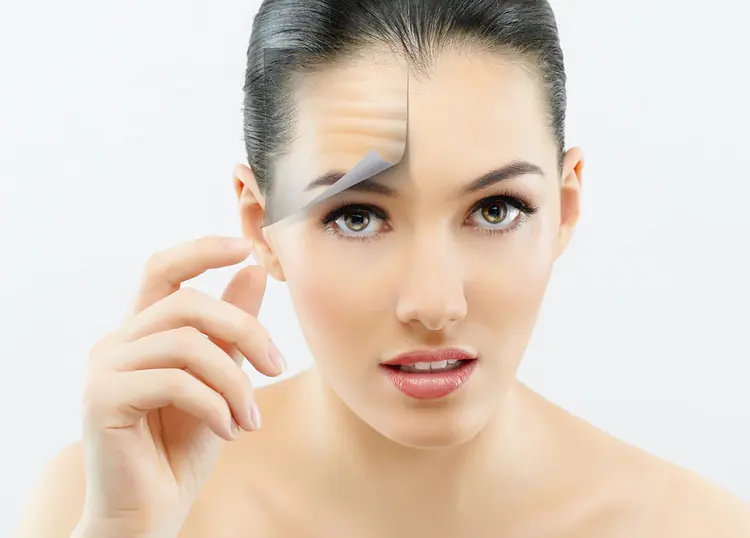
Photo 1. The skin has the ability to regenerate, but this ability depends on the severity of the burn. Source: Flickr (Eugene Evehealth).
Features of the rehabilitation period
The rehabilitation period after burns depends on the depth, degree of damage, area of affected tissue, features of treatment in the acute period, and the presence of post-burn pathologies.
In severe cases, it is important not only to eliminate the local consequences of burns, but also to correct the changes that have occurred in organs and systems. When burns occur loss of restorative, protective, thermoregulatory and metabolic, metabolic and receptor functions of the skin. In this case, changes in the properties of the skin affect the dysfunction of external respiration and the associated circulatory system. The goal of rehabilitation is to restore these adaptation functions.
At the initial stage, conservative treatment is carried out in order to prevent tissue deformation and restore functions affected by the burn. Of primary importance during this period is physiotherapy, nutrition, physiotherapy And psychotherapy.
In the presence of post-burn scars and tissue deformation, it is indicated as rehabilitation surgical correction.
Note! Rehabilitation after a burn disease will only be effective when it takes place under constant close medical supervision and constant correction, if necessary, of rehabilitation methods.
Medicines for accelerated healing
A number of requirements are imposed on medications intended to accelerate the healing of burn surfaces. When choosing a medication you need focus on the phase features of the wound process:
- inflammatory a process involving melting of the necrotic mass and removal of decay products;
- regenerating a process with proliferation and formation of young, vascular-rich granulation tissues;
- epithelial process, with the formation of scars and final healing of the wound surface.
Thus, the rehabilitation period takes place in three stages:
- relieving inflammation,
- exfoliation of dead skin cells,
- hydration,
- protection of restored skin.
If there are burn surfaces with signs of suppuration, the wounds are treated antibacterial means: chlorhexidine, miramistin, etc.
Drying agents are used to relieve inflammation. anti-inflammatory products: Zinc ointment, Levomekol, Ebermin, Ichthyol ointment, Calendula ointment.
Ointments with healing and regenerating effect are used after the inflammatory process has been eliminated, at the stage of skin regeneration and healing of burn wounds.
Panthenol
Means based on dexpanthenol and B vitamins, stimulates tissue regeneration, has metabolic and anti-inflammatory effects. Apply to affected surfaces several times during the day.
Prescribed for 1st degree burns in the first phase. Actively prevents the formation of scars and cicatrices, therefore it is also used as a prophylaxis for burns. The product is well absorbed due to its foam structure.
Levomekol
Combination drug based on chloramphenicol and dioxomethyltetrahydropyrimidine, has anti-inflammatory (dehydrating) and antimicrobial effects, and also stimulates regeneration processes. The antibiotic included in the drug prevents suppuration of the wound, so the product is indicated for burns of 2-3 degrees and for application on the first day after receiving a burn.
Ebermin
The ointment has a very high antimicrobial level and has a wound healing effect. The use prevents drying out of the skin and provides antimicrobial protection at the stage of the epithelial process, for 2-3 degree burns.
Zinc ointment
Means based on zinc oxide has a drying, adsorbing, astringent and disinfecting effect, helps reduce exudation and weeping, eliminates inflammation and irritation. The drug is indicated for any type of burn and is prescribed in the phase of tissue regeneration.
Ichthyol ointment
Antiseptic, keratoplasty and disinfectant drug based on ichthammol, used in the treatment of infectious and inflammatory pathologies of the skin of varying severity. Re-epithelialization of the skin is observed during the treatment of first and second degree burns.
Calendula ointment
Herbal medicine, high in triterpene saponins, triterpene alcohols and flavonoids, is characterized by a wound-healing and disinfecting effect, and also has a powerful antiseptic effect. The drug is indicated for the treatment of mild injuries, including sunburn.
Rescuer
The balm has a regenerative effect thanks to sea buckthorn oil, and also has a calming, protective, healing, antibacterial, absorbable and mild analgesic effect, which is due to the presence of oils in the composition plant extracts. Used to treat mild burn injuries.
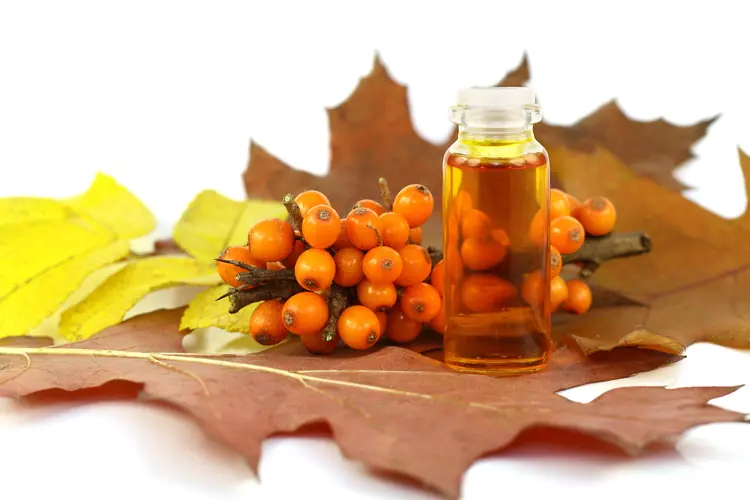
Photo 2. Sea buckthorn oil is used to heal mucous and burn wounds. Source: Flickr (Riviera Wellness Spa).
Bepanten
Pharmaceutical drug based on dexpanthenol or provitamin “B5”, with a regenerating effect, widely used in the prevention and treatment of dry skin in cases of integrity damage caused by chemical and thermal burns. The drug is indicated for the treatment of 1st degree burns. Suitable for eliminating light burns, including those on children's skin.
Rules for using healing ointments
The rate of regeneration of tissues damaged as a result of burns directly depends not only on the individual restorative properties of a particular patient, but also on compliance with the rules for using healing medicinal compositions.
Rules for the use of anti-burn external agents:
- medicinal composition applied to cleaned from dirt and dust surface burn;
- the optimal treatment option can be considered applying a sterile bandage impregnated with medicine to the wound for burns, which must be changed twice a day;
- before processing affected skin, burn site many times washed cool water.
Anti-burn cream or gel is used on moist burn areas, while ointments are more effective on dry skin.
If you strictly follow the rules for using medications for burns, the likelihood of complications will be minimal, and the healing process will be quick.
Measures for skin restoration
Cleansing procedures are carried out using peeling: chemical, mechanical or hardware.
You can moisturize restored skin using various cosmetics, as well as by including foods rich in vitamins in your diet.
Causes of dry and tight skin after a burn
The skin at the burn site, although restored, cannot be called complete. Due to the loss of its functions, the damaged the skin loses its ability to carry out metabolic processes, because of which it becomes dry and thin, easily injured, constantly peeling and itching.
After removing inflammation and exfoliating dead skin particles (post-burn crust), moisturizing the skin becomes an important step. For this purpose, absolutely any fortified moisturizing compound, with the exception of petroleum-based creams. Products that effectively prevent dry skin and also have pronounced antimicrobial protective properties:
- Bepanten cream or ointment
- Radevit
- Baby cream.
Note! Experts do not recommend using regular nourishing cream for this purpose. Special moisturizers with a softening effect are suitable.
It is important not only to nourish the restored skin daily, but also to moisturize it from the inside; for this you need to include in your diet include foods high in vitamins A, E, B. They are found in sufficient quantities in nuts, seafood, liver, tomatoes and black bread.
Restored skin needs increased protection, so after the recovery period it requires the use of high-level UV protection products.



